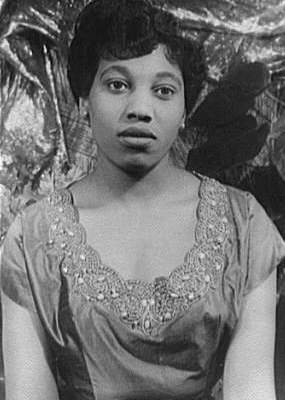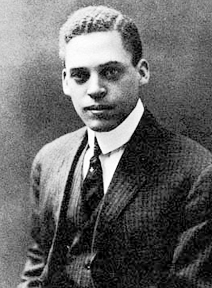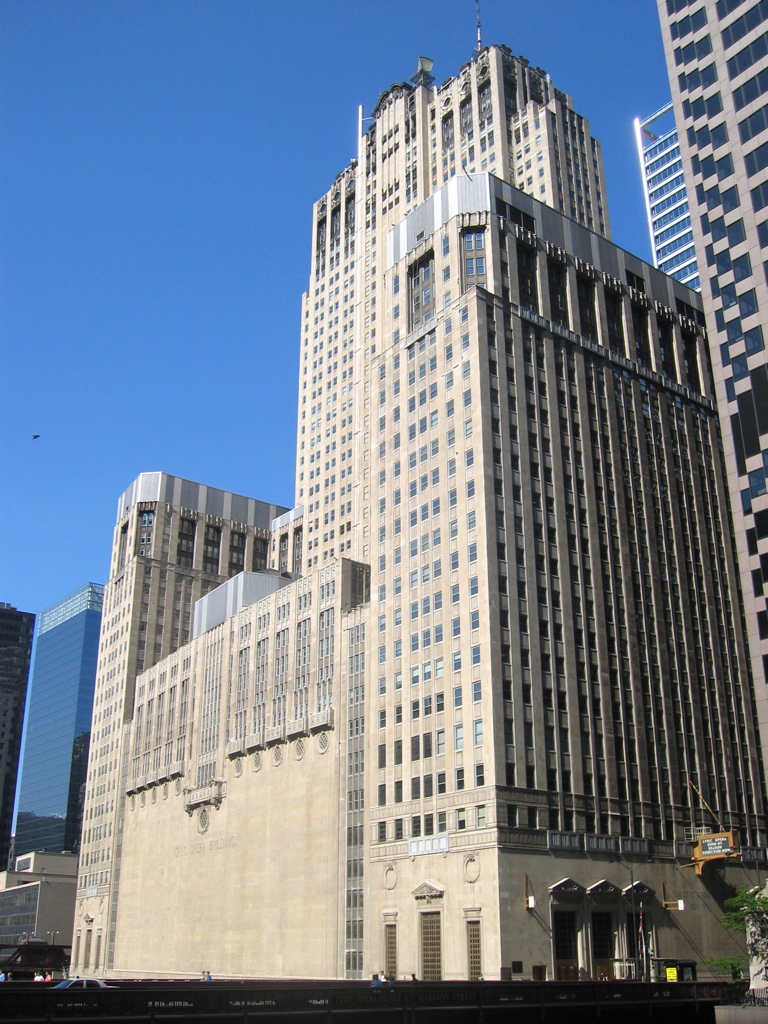|
Leontyne Price
Mary Violet Leontyne Price (born February 10, 1927) is an American soprano who was the first African American soprano to receive international acclaim. From 1961 she began a long association with the Metropolitan Opera, where she was the first African American to be a leading performer. She regularly appeared at the world's major opera houses, the Royal Opera House, San Francisco Opera, Lyric Opera of Chicago, and La Scala, the last at which she was also the first African American to sing a leading role. She was particularly renowned for her performances of the title role in Verdi's ''Aida''. Born in Laurel, Mississippi, Price attended Central State University and then Juilliard, where she had her operatic debut as Mistress Ford in Verdi's ''Falstaff''. Having heard the performance, Virgil Thomson engaged her in ''Four Saints in Three Acts'' and she then toured—starring alongside her husband William Warfield—in a successful revival of Gerswhin's ''Porgy and Bess''. Numerous ... [...More Info...] [...Related Items...] OR: [Wikipedia] [Google] [Baidu] |
Jack Mitchell (photographer)
Jack Mitchell (September 13, 1925 – November 7, 2013) was an American photographer. He photographed American artists, dancers, film and theatre performers, musicians and writers. His portraiture, lighting skill, and ability to capture dancers in what he termed "moving stills" made him one of the most important dance photographers of the 20th century. He photographed the Alvin Ailey American Dance Theater for three decades, producing a body of work that includes over ten thousand images. He was the official photographer of the American Ballet Theater for a decade and also photographed dancers for other top ballet companies in the US and Canada. His work appeared in major newspapers and on the cover of major magazines, including over 160 covers of ''Dance Magazine''. ''Arts Magazine'' called him the first photographer to treat creative individuals as characters outside of their works. '' Smithsonian'' called him the benchmark by which other dance photographers assessed their own ... [...More Info...] [...Related Items...] OR: [Wikipedia] [Google] [Baidu] |
Spingarn Medal
The Spingarn Medal is awarded annually by the National Association for the Advancement of Colored People (NAACP) for an outstanding achievement by an African American African Americans (also referred to as Black Americans and Afro-Americans) are an ethnic group consisting of Americans with partial or total ancestry from sub-Saharan Africa. The term "African American" generally denotes descendants of ens .... The award was created in 1914 by Joel Elias Spingarn, chairman of the board of directors of the NAACP. It was first awarded to biologist Ernest E. Just in 1915, and has been given most years thereafter. At its annual convention, the NAACP presents the award after deciding from open nominations. Should the organization end, it would be managed by Howard or Fisk Universities. The gold medal is valued at $100, and Spingarn left $20,000 () in his will for the NAACP to continue giving it indefinitely. List of recipients Notes ;Footnotes ;Specific references ;Gen ... [...More Info...] [...Related Items...] OR: [Wikipedia] [Google] [Baidu] |
Porgy And Bess
''Porgy and Bess'' () is an English-language opera by American composer George Gershwin, with a libretto written by author DuBose Heyward and lyricist Ira Gershwin. It was adapted from Dorothy Heyward and DuBose Heyward's play '' Porgy'', itself an adaptation of DuBose Heyward's 1925 novel of the same name. ''Porgy and Bess'' was first performed in Boston on September 30, 1935, before it moved to Broadway in New York City. It featured a cast of classically trained African-American singers—a daring artistic choice at the time. A 1976 Houston Grand Opera production gained it a renewed popularity after languishing in the doldrums of the 1960s and early 1970s, and it is now one of the best known and most frequently performed operas. The libretto of ''Porgy and Bess'' tells the story of Porgy, a disabled black street beggar living in the slums of Charleston. It deals with his attempts to rescue Bess from the clutches of Crown, her violent and possessive lover, and Sportin ... [...More Info...] [...Related Items...] OR: [Wikipedia] [Google] [Baidu] |
Four Saints In Three Acts
''Four Saints in Three Acts'' is an opera composed in 1928 by Virgil Thomson, setting a libretto written in 1927 by Gertrude Stein. It contains about 20 saints and is in at least four acts. It was groundbreaking in form, content, and for its all-black cast, with singers directed by Eva Jessye, a prominent black choral director, and supported by her choir."Eva Jessye" ''Eva Jessye Collection,'' African American Music Collection, University of Michigan, accessed December 4, 2008 Thomson suggested the topic, and the libretto as delivered can be read in Stein's collected works. The opera features two 16th-century Spanish saints—the former mercenary and the mystic [...More Info...] [...Related Items...] OR: [Wikipedia] [Google] [Baidu] |
Virgil Thomson
Virgil Thomson (November 25, 1896 – September 30, 1989) was an American composer and critic. He was instrumental in the development of the "American Sound" in classical music. He has been described as a modernist, a neoromantic, a neoclassicist, and a composer of "an Olympian blend of humanity and detachment" whose "expressive voice was always carefully muted" until his late opera ''Lord Byron'' which, in contrast to all his previous work, exhibited an emotional content that rises to "moments of real passion". Biography Early years Thomson was born in Kansas City, Missouri. As a child he befriended Alice Smith, great-granddaughter of Joseph Smith, founder of the Latter-day Saint movement. During his youth he often played the organ in Grace Church, (now Grace and Holy Trinity Cathedral), as his piano teacher was the church's organist. After World War I, he entered Harvard University thanks to a loan from Dr. Fred M. Smith, the president of the Reorganized Church of Jesu ... [...More Info...] [...Related Items...] OR: [Wikipedia] [Google] [Baidu] |
Falstaff (opera)
''Falstaff'' () is a comic opera in three acts by the Italian composer Giuseppe Verdi. The Italian-language libretto was adapted by Arrigo Boito from the play ''The Merry Wives of Windsor'' and scenes from '' Henry IV, Part 1'' and '' Part 2'', by William Shakespeare. The work premiered on 9 February 1893 at La Scala, Milan. Verdi wrote ''Falstaff'', the last of his 28 operas, as he approached the age of 80. It was his second comedy, and his third work based on a Shakespeare play, following ''Macbeth'' and ''Otello''. The plot revolves around the thwarted, sometimes farcical, efforts of the fat knight Sir John Falstaff to seduce two married women to gain access to their husbands' wealth. Verdi was concerned about working on a new opera at his advanced age, but he yearned to write a comic work and was pleased with Boito's draft libretto. It took the collaborators three years from mid-1889 to complete. Although the prospect of a new opera from Verdi aroused immense ... [...More Info...] [...Related Items...] OR: [Wikipedia] [Google] [Baidu] |
Juilliard
The Juilliard School ( ) is a private performing arts conservatory in New York City. Established in 1905, the school trains about 850 undergraduate and graduate students in dance, drama, and music. It is widely regarded as one of the most elite drama, music, and dance schools in the world. History Early years: 1905-1946 In 1905, the Institute of Musical Art, Juilliard's predecessor institution, was founded by Frank Damrosch, the godson of Franz Liszt and head of music education for New York City's public schools, on the premise that the United States did not have a premier music school and too many students were going to Europe to study music. In 1919, a wealthy textile merchant named Augustus Juilliard died and left the school in his will the largest single bequest for the advancement of music at that time. In 1968, the school's name was changed from the Juilliard School of Music to The Juilliard School to reflect its broadened mission to educate musicians, directors, an ... [...More Info...] [...Related Items...] OR: [Wikipedia] [Google] [Baidu] |
La Scala
La Scala (, , ; abbreviation in Italian of the official name ) is a famous opera house in Milan, Italy. The theatre was inaugurated on 3 August 1778 and was originally known as the ' (New Royal-Ducal Theatre alla Scala). The premiere performance was Antonio Salieri's '' Europa riconosciuta''. Most of Italy's greatest operatic artists, and many of the finest singers from around the world, have appeared at La Scala. The theatre is regarded as one of the leading opera and ballet theatres globally. It is home to the La Scala Theatre Chorus, La Scala Theatre Ballet, La Scala Theatre Orchestra, and the Filarmonica della Scala orchestra. The theatre also has an associate school, known as the La Scala Theatre Academy ( it, Accademia Teatro alla Scala, links=no), which offers professional training in music, dance, stagecraft, and stage management. Overview La Scala's season opens on 7 December, Saint Ambrose's Day, the feast day of Milan's patron saint. All performances must end bef ... [...More Info...] [...Related Items...] OR: [Wikipedia] [Google] [Baidu] |
Lyric Opera Of Chicago
Lyric Opera of Chicago is one of the leading opera companies in the United States. It was founded in Chicago in 1954, under the name 'Lyric Theatre of Chicago' by Carol Fox, Nicola Rescigno and Lawrence Kelly, with a season that included Maria Callas's American debut in ''Norma''. The company was re-organized by Fox in 1956 under its present name and, after her 1981 departure, it has continued to be of one of the major opera companies in the United States. The Lyric is housed in a theater and related spaces in the Civic Opera Building. These spaces are now owned by the Lyric. Opera in Chicago 1850–1954 The first opera to be performed in Chicago was Bellini's ''La sonnambula'', presented by a traveling opera company on 29 July 1850. Chicago's first opera house opened in 1865 but was destroyed in the Great Fire of Chicago in 1871. The second opera house, the Chicago Auditorium, opened in 1889. In 1929 the current Civic Opera House on 20 North Wacker Drive was opened, though ... [...More Info...] [...Related Items...] OR: [Wikipedia] [Google] [Baidu] |
San Francisco Opera
San Francisco Opera (SFO) is an American opera company founded in 1923 by Gaetano Merola (1881–1953) based in San Francisco, California. History Gaetano Merola (1923–1953) Merola's road to prominence in the Bay Area began in 1906 when he first visited the city. In 1909, he returned as the conductor of the International Opera Company of Montreal, one of the many visiting troupes that frequented the bustling city. Continued visits for the next decade convinced him that a San Francisco company was viable. In 1921, Merola returned to live in the city under the patronage of Mrs. Oliver Stine. During this time, Merola conceived of branching away from the area's reliance on visiting troupes for entertainment that had been common place since the Gold Rush era. By the fall, he was planning his first season, and the very next year, Merola organized a trial season at Stanford University. The first performance occurred in the Stanford Cardinal's football stadium on June 3rd, 1922 w ... [...More Info...] [...Related Items...] OR: [Wikipedia] [Google] [Baidu] |
Royal Opera House
The Royal Opera House (ROH) is an opera house and major performing arts venue in Covent Garden, central London. The large building is often referred to as simply Covent Garden, after a previous use of the site. It is the home of The Royal Opera, The Royal Ballet, and the Orchestra of the Royal Opera House. The first theatre on the site, the Theatre Royal (1732), served primarily as a playhouse for the first hundred years of its history. In 1734, the first ballet was presented. A year later, the first season of operas, by George Frideric Handel, began. Many of his operas and oratorios were specifically written for Covent Garden and had their premieres there. The current building is the third theatre on the site, following disastrous fires in 1808 and 1856 to previous buildings. The façade, foyer, and auditorium date from 1858, but almost every other element of the present complex dates from an extensive reconstruction in the 1990s. The main auditorium seats 2,256 peopl ... [...More Info...] [...Related Items...] OR: [Wikipedia] [Google] [Baidu] |
Prima Donna
In opera or commedia dell'arte, a prima donna (; Italian for "first lady"; plural: ''prime donne'') is the leading female singer in the company, the person to whom the prime roles would be given. ''Prime donne'' often had grand off-stage personalities and were seen as demanding of their colleagues. From its original usage in opera, the term has spread in contemporary usage to refer to anyone behaving in a demanding or temperamental fashion, or having an inflated view of oneself and a self-centered attitude. The prima donna in opera was normally, but not necessarily, a soprano. The corresponding term for the male lead (usually a castrato in the 17th and 18th centuries, later a tenor) is primo uomo.H. Rosenthal, H. and J. Warrack, ''The Concise Oxford Dictionary of Opera'', 2nd Edition, Oxford University Press, 1979. p. 398. Opera In 19th-century Italy, the leading woman in an opera or commedia dell'arte company was known as the ''prima donna'', literally the "first lady". T ... [...More Info...] [...Related Items...] OR: [Wikipedia] [Google] [Baidu] |


.jpg)

_1.jpg)





_(c112-02-14).jpg)